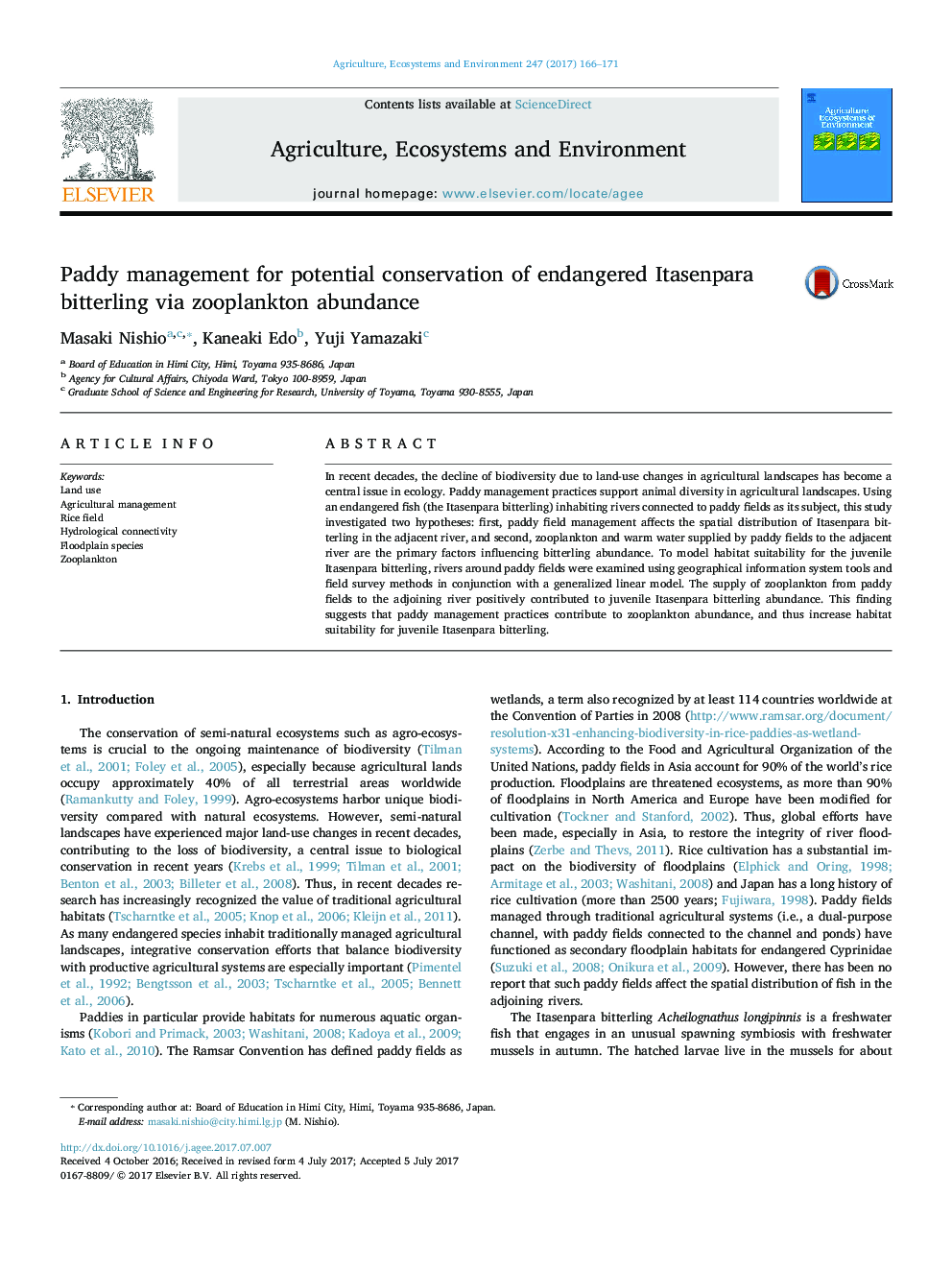| Article ID | Journal | Published Year | Pages | File Type |
|---|---|---|---|---|
| 5537989 | Agriculture, Ecosystems & Environment | 2017 | 6 Pages |
Abstract
In recent decades, the decline of biodiversity due to land-use changes in agricultural landscapes has become a central issue in ecology. Paddy management practices support animal diversity in agricultural landscapes. Using an endangered fish (the Itasenpara bitterling) inhabiting rivers connected to paddy fields as its subject, this study investigated two hypotheses: first, paddy field management affects the spatial distribution of Itasenpara bitterling in the adjacent river, and second, zooplankton and warm water supplied by paddy fields to the adjacent river are the primary factors influencing bitterling abundance. To model habitat suitability for the juvenile Itasenpara bitterling, rivers around paddy fields were examined using geographical information system tools and field survey methods in conjunction with a generalized linear model. The supply of zooplankton from paddy fields to the adjoining river positively contributed to juvenile Itasenpara bitterling abundance. This finding suggests that paddy management practices contribute to zooplankton abundance, and thus increase habitat suitability for juvenile Itasenpara bitterling.
Related Topics
Life Sciences
Agricultural and Biological Sciences
Agronomy and Crop Science
Authors
Masaki Nishio, Kaneaki Edo, Yuji Yamazaki,
